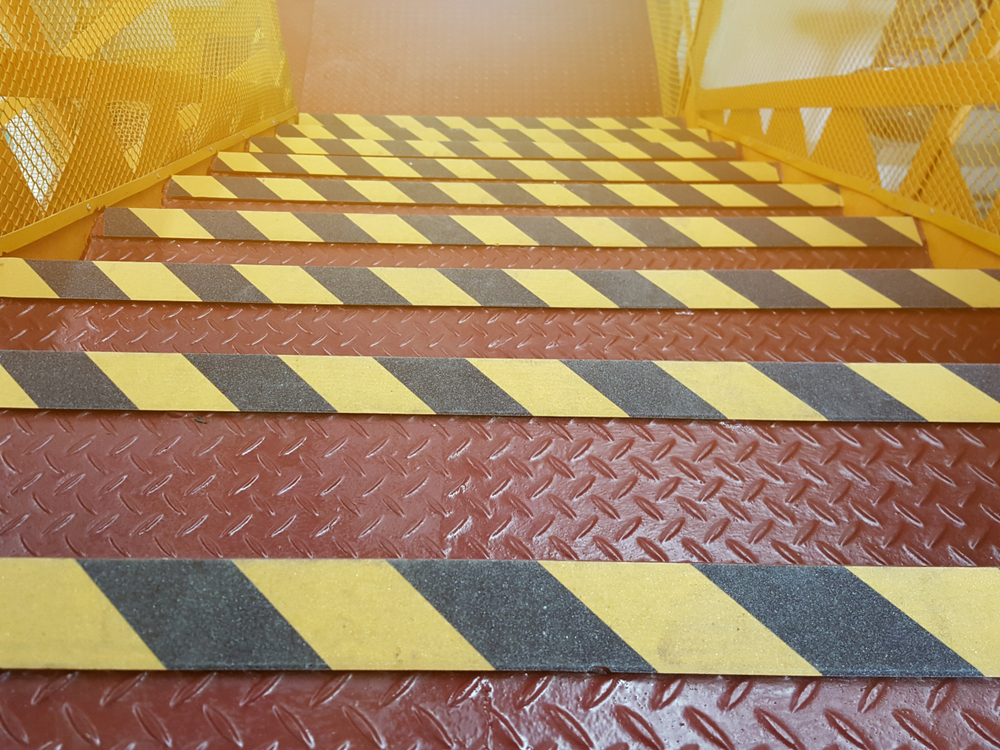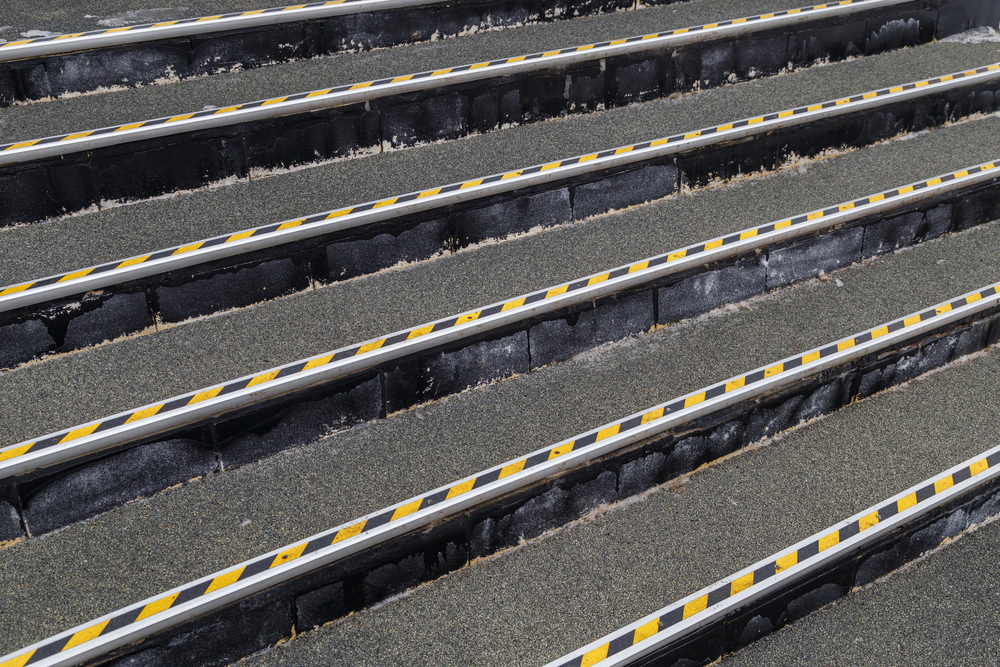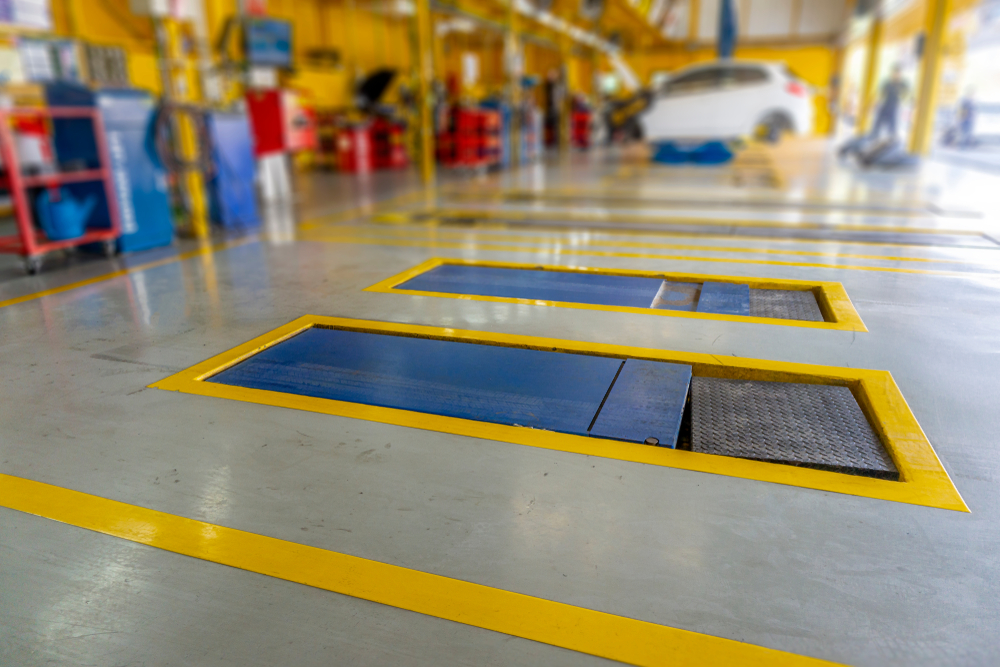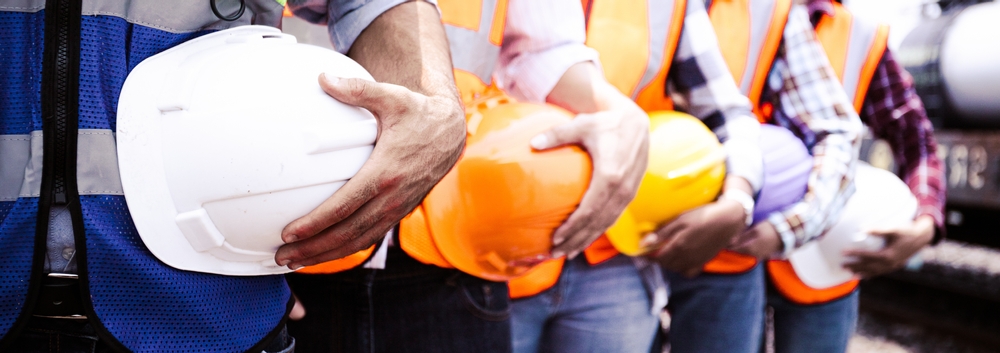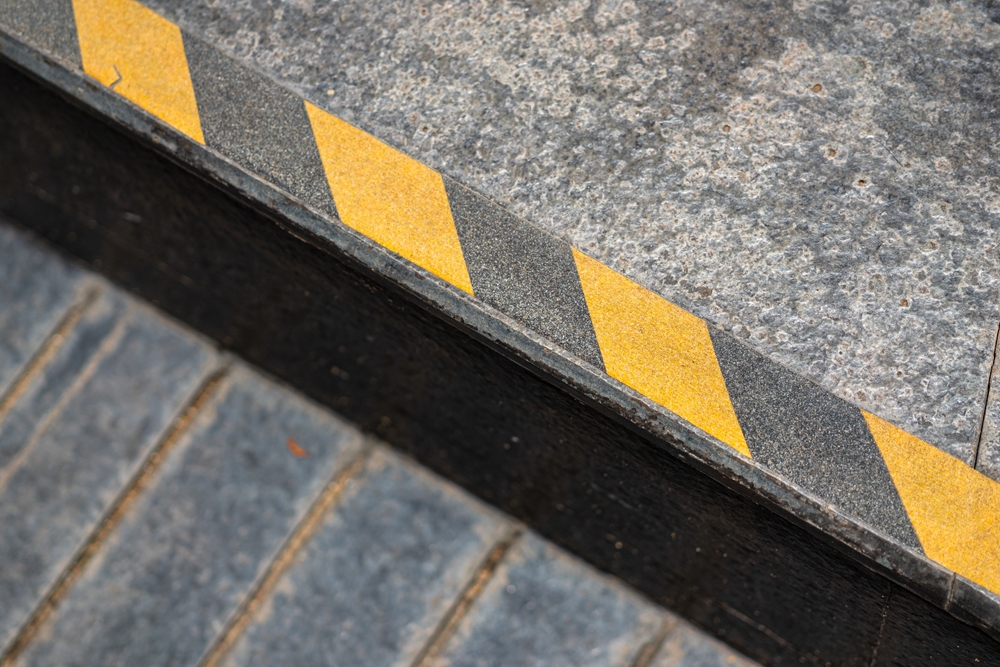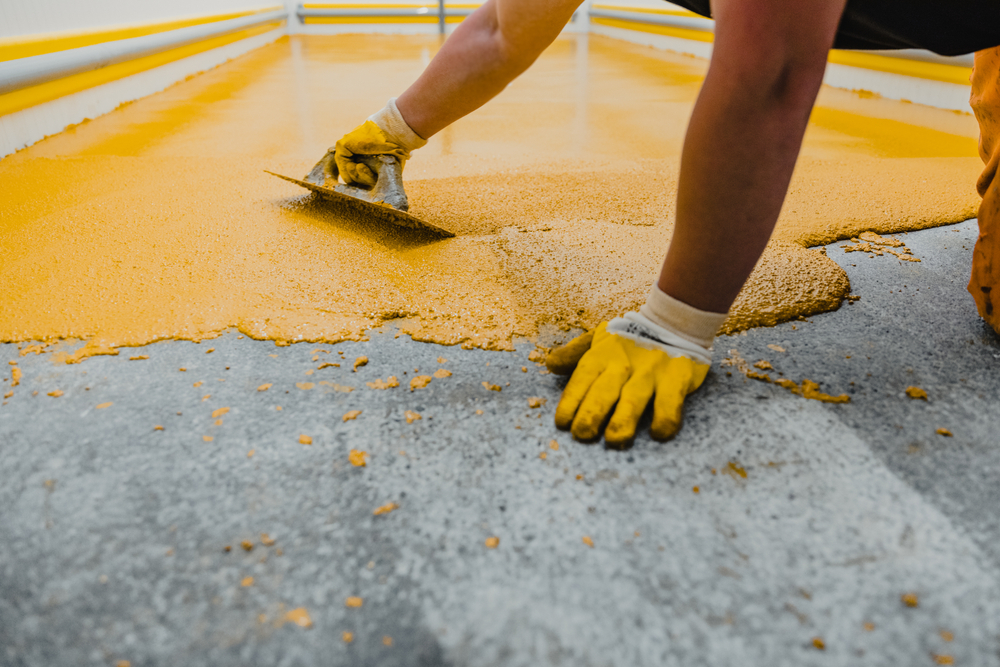In the UK, where wet weather is a common occurrence and workplace safety regulations are stringent, the significance of anti-slip flooring cannot be overstated. Whether due to rain or indoor spills, slip hazards can be created in many workplaces, and employers have a duty to protect their workers from injury in potentially dangerous conditions.
Non-slip or slip-resistant flooring is a vital component in preventing accidents and ensuring a safe environment for employees, customers and the public. In the following guide, we explain how to choose the right non-slip flooring solutions for your requirements, and what you should be aware of to make sure you remain compliant with health and safety laws.
The risks of slippery floors
According to the Health and Safety Executive (HSE), slips and trips are the most common cause of injury at work. A fall can have long-term consequences, including time off work, medical expenses and chronic pain. For businesses, this translates to lost productivity, compensation claims and potential legal action.
Employees, customers and visitors can be affected, with the elderly and those with disabilities being especially vulnerable. The ramifications of a fall for these individuals can be severe.
It's not just about water. Oils, greases, and other contaminants can create a slick veneer on otherwise safe surfaces. Even dry contaminants like dust and powders can affect traction, leading to hazardous conditions.
In response to these risks, the HSE has set out clear guidelines for employers under the Workplace (Health, Safety and Welfare) Regulations 1992, mandating the provision of floors that are, as far as reasonably practicable, safe and without risks to health. This includes taking measures to ensure that floors are suitably maintained and free from obstructions. Failure to comply with these regulations can not only lead to injuries but also significant financial and reputational damage to a business.
Overview of anti-slip flooring types
Below are examples of slip-resistant flooring solutions that employers should consider implementing in their workplaces:
Anti-slip floor panels
Designed for durability and ease of installation, anti-slip floor panels provide immediate traction in areas prone to spillages or where machinery is operated.
Anti-slip tapes and treads
Temporary tapes and movable treads offer a versatile solution that can be applied to a variety of surfaces. They are resistant to various substances, making them suitable for industrial environments.
Anti-slip mats
Rubber anti-slip mats are a quick and cost-effective solution, perfect for temporary installations or where flexibility is needed.
Anti-slip paint and coatings
Specialised paints and coatings can be applied to floors to create a permanent non-slip surface, ideal for both indoor and outdoor settings.
Interlocking floor tiles
These tiles can be a great solution for areas that need durable, long-lasting floors with the added benefit of easy installation and replacement.
Vinyl and linoleum flooring
With inherent anti-slip properties, these flooring types are a common choice in sectors like healthcare and education, providing a balance of safety and hygiene.
Choosing the right anti-slip solution
Conducting a risk assessment can help you to understand what steps you will need to take to reduce slip risks. This assessment should take into account several key factors to ensure that the chosen solution aligns with the specific needs of the environment and the people who use it, including:
- Assessing the environment: is it prone to wet conditions due to weather, industry processes, or cleaning routines? Does the area experience high volumes of foot traffic? These questions are crucial as areas with heavy footfall or regular exposure to liquids require more robust anti-slip solutions.
- Matching the flooring to the risk: different levels of slip risk will require different types of slip-resistant flooring. For instance, workplaces that handle oils or chemicals may need flooring with special resistance properties, whereas a commercial kitchen may need a solution that also allows for easy cleaning and drainage.
- Durability and maintenance: the chosen flooring should withstand the test of time and retain its anti-slip properties even with extensive use. It should be easy to clean and maintain, as neglected floors can quickly become slip hazards themselves. Additionally, consider the maintenance schedule and the ease with which repairs or replacements can be made without significantly disrupting business operations.
- Compliance with standards: in the UK, adherence to safety standards and regulations is paramount. Flooring solutions must meet the standards set out by the HSE and other relevant bodies. Certified products typically offer better performance and reassurance of quality.
- Cost-effectiveness: while initial costs are an important consideration, it's essential to evaluate the long-term value of the flooring. A more expensive flooring material that offers greater durability and reduced maintenance may be more cost-effective over its lifespan than a cheaper, less durable alternative.
- Expert consultation: given the technical nature of anti-slip flooring solutions, consulting with manufacturers and safety experts like Safety Buyer can provide valuable insights. These professionals can offer tailored advice based on years of experience and help navigate complex product specifications to find the right fit for your needs.
By carefully evaluating these factors, businesses can make informed decisions that not only enhance safety but also contribute to the overall efficiency and aesthetic appeal of their premises. The right anti-slip solution is an integral part of creating a safe and welcoming environment for everyone.
Installing anti-slip flooring
The installation of anti-slip flooring should be carried out meticulously. The surface must be clean, dry, and smooth for tapes and treads to stick properly. Professional installation is recommended for more complex solutions like floor panels and coatings to ensure maximum safety and longevity.
Maintenance for longevity
Maintaining the anti-slip properties of your flooring is crucial. Regular cleaning, avoiding the buildup of dirt and grease, and periodic assessments for wear and tear will help preserve the flooring's effectiveness.
Shop with Safety Buyer
Selecting the right anti-slip flooring is a decision that can have lasting implications for safety and operational efficiency. With a multitude of options available, it's essential to assess your specific needs and seek expert advice. Safety Buyer is equipped to provide that guidance, ensuring that you make the best choice for your circumstances. To learn more, browse our selection today, or call us on 0800 043 0161, or send us an email to sales@safetybuyer.com.
 Over 12,000
Over 12,000  Simple no quibble
Simple no quibble  Prompt dispatch &
Prompt dispatch &  UK Mainland Delivery
UK Mainland Delivery 